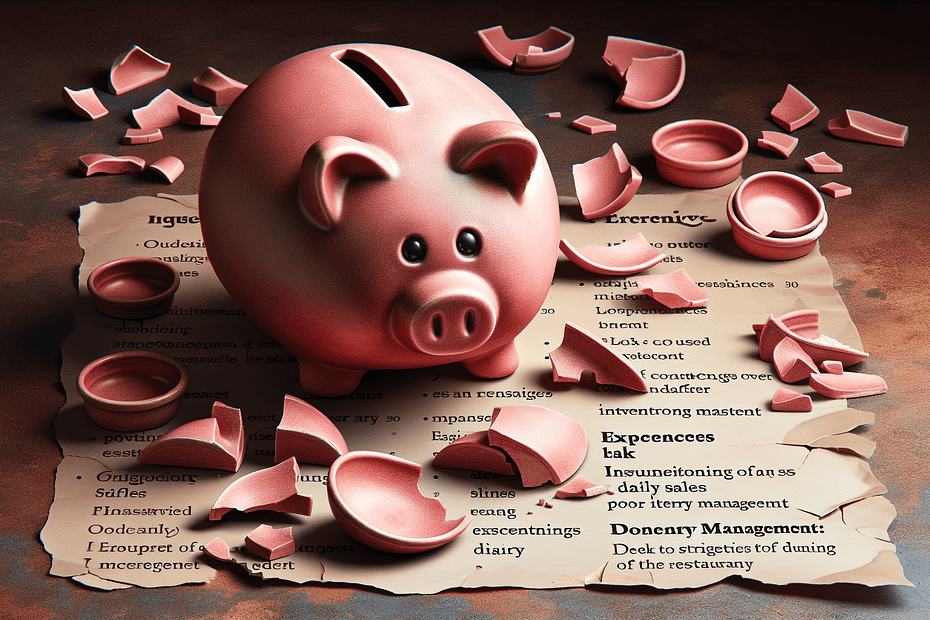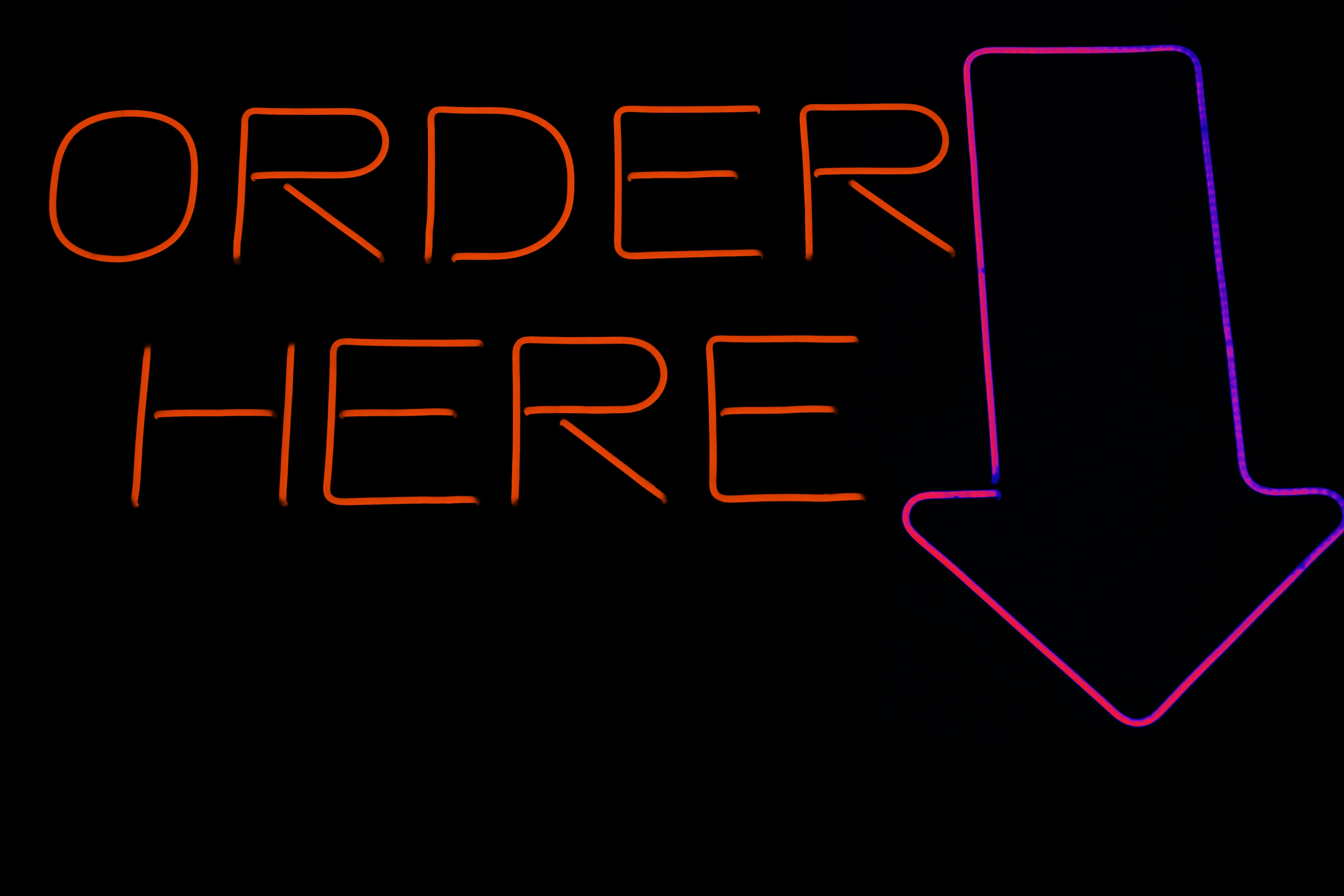Are you a restaurant owner looking for ways to better manage your cash flow? Look no further! In this article, we will explore the best strategies for effectively handling the finances of your restaurant. Whether you are just starting out or have been in the business for years, these tips and techniques will help you keep your cash flow steady and your business thriving. From monitoring expenses to implementing efficient payment systems, we’ve got you covered. So, let’s get started and ensure the financial success of your restaurant! Managing cash flow is a critical aspect of running a successful restaurant. To ensure a healthy financial situation, it is essential to implement effective strategies for monitoring daily sales, controlling expenditures, managing inventory, streamlining purchasing processes, implementing effective pricing strategies, improving cash flow timing, utilizing technology for cash flow management, managing debt and credit, monitoring and reducing operational costs, and seeking professional advice. By implementing these strategies, you can optimize your restaurant’s cash flow and ensure long-term success.
Implementing a Point-of-Sale (POS) System
Implementing a reliable Point-of-Sale (POS) system is crucial for monitoring daily sales. A POS system allows you to track sales in real-time, generate detailed sales reports, and analyze sales trends over time. It provides valuable insights into your restaurant’s performance and helps identify areas for improvement. By having access to accurate and up-to-date sales data, you can make informed decisions to drive profitability and growth.
Analyzing Sales Reports
Analyzing sales reports is a vital part of managing restaurant cash flow. These reports allow you to identify which menu items are the most profitable and which ones may need adjustments. By understanding your restaurant’s top-selling items, you can focus on maximizing their sales potential. Additionally, analyzing sales reports helps you identify peak and off-peak hours, enabling you to optimize staff schedules and reduce labor costs during slow periods.
Identifying Peak and Off-Peak Hours
Identifying peak and off-peak hours is crucial for managing cash flow effectively. During peak hours, you can generate higher sales and revenue, but you need to ensure that your operations are efficient and staffed adequately to meet the demand. On the other hand, off-peak hours may require cost-cutting measures to minimize expenses while still providing a quality dining experience for your customers. By understanding the flow of customers throughout the day, you can make informed decisions on staffing levels, inventory management, and promotional activities.
Creating a Detailed Budget
Controlling expenditures starts with creating a detailed budget. A budget outlines your restaurant’s expected income and expenses, allowing you to plan and allocate resources effectively. By categorizing expenses and setting spending limits, you can monitor and control costs in various areas such as food and beverage, labor, marketing, and overhead. Regularly reviewing and adjusting your budget can help you identify areas where you can reduce spending and improve cash flow.
Negotiating with Suppliers
Another effective strategy for controlling expenditures is negotiating with suppliers. Building strong relationships with your suppliers and negotiating favorable terms can result in cost savings. Consider asking for volume discounts, extended payment terms, or more competitive pricing. By proactively engaging with your suppliers and exploring cost-saving opportunities, you can improve your restaurant’s profitability and cash flow.
Implementing Cost-Cutting Measures
Implementing cost-cutting measures is an essential part of managing cash flow effectively. Look for areas where you can reduce expenses without compromising the quality of your offerings. For example, you can optimize your menu by focusing on ingredients that are in season or readily available, reducing food waste and cost. Additionally, exploring energy-efficient equipment and technology can help lower utility expenses. Regularly reviewing operational processes and identifying areas for improvement can lead to significant savings in the long run.
Conducting Regular Inventory Checks
Managing inventory efficiently is crucial for cash flow management. Regularly conducting inventory checks allows you to track your stock levels accurately and identify any discrepancies. By having a clear understanding of your inventory, you can avoid overstocking or running out of essential ingredients, resulting in unnecessary expenses or missed sales opportunities. Utilizing inventory management systems or software can simplify the process and provide real-time insights into your stock levels.
Optimizing Inventory Levels
Optimizing inventory levels is equally important for managing cash flow effectively. By analyzing sales data and demand patterns, you can determine the optimal stock levels for each item. Maintaining the right amount of inventory minimizes storage costs, reduces the risk of spoilage or obsolescence, and ensures that you have enough supply to meet customer demand. Implementing automated inventory tracking systems can help streamline this process and provide accurate data for decision-making.
Implementing a First-in, First-out (FIFO) System
Implementing a First-in, First-out (FIFO) system is a best practice for inventory management. This system ensures that older inventory is used or sold before newer stock, reducing the risk of spoilage or obsolescence. By rotating inventory properly, you can maintain product quality and avoid unnecessary waste. Training your staff on the importance of FIFO and implementing clear procedures can help maintain the integrity of your inventory and preserve cash flow.
Identifying Preferred Suppliers
Streamlining purchasing processes starts with identifying preferred suppliers. Establishing strong relationships with reliable suppliers can result in various benefits, such as better pricing, priority access to products, and consistent quality. By consolidating your purchasing with preferred suppliers, you can simplify the ordering process and negotiate more favorable terms. Regularly reviewing supplier performance and seeking feedback from your team can help ensure that your preferred suppliers continue to meet your needs.
Implementing Centralized Purchasing
Implementing centralized purchasing can streamline your procurement processes and improve cash flow management. Centralizing purchasing involves consolidating your purchasing activities across multiple locations or departments, allowing for better control and coordination. By leveraging the volume of your purchases, you can negotiate better pricing and terms with suppliers. Implementing clear protocols and utilizing purchasing software can help simplify the centralized purchasing process.
Utilizing Purchase Order Systems
Utilizing purchase order systems is another effective strategy for streamlining purchasing. Purchase orders help streamline the ordering process, improve accuracy, and provide proper documentation for future reference. By implementing a clear system for generating and tracking purchase orders, you can reduce the risk of errors, misunderstandings, and unnecessary expenses. Leveraging technology solutions that automate purchase order management can further enhance efficiency and control.
Analyzing Competitors’ Pricing
Implementing effective pricing strategies requires understanding your competitors’ pricing. Analyzing their pricing structure, promotional activities, and value propositions can provide valuable insights into market trends and customer expectations. By positioning your menu items competitively while maintaining profitability, you can attract customers and optimize revenue. Regularly monitoring and adjusting your pricing based on market conditions can help you stay ahead of the competition and maximize cash flow.
Optimizing Menu Pricing
Optimizing menu pricing is a crucial element of managing restaurant cash flow. Carefully analyze the cost of ingredients, labor, and overhead to determine the appropriate pricing for each menu item. Consider using menu engineering techniques that highlight high-profit items or promote upselling and cross-selling opportunities. Experimenting with different pricing strategies and regularly reviewing their impact on sales and profitability can help you find the optimal balance for your restaurant.
Utilizing Upselling and Cross-selling Techniques
Implementing upselling and cross-selling techniques can significantly impact your cash flow. Train your staff to recommend additional menu items or upgrades to customers, increasing the average transaction value. Encourage suggestive selling techniques that are genuine and value-driven to enhance the dining experience while boosting revenue. By effectively utilizing upselling and cross-selling, you can maximize your profit margins and improve cash flow without substantial additional costs.
Negotiating Favorable Payment Terms with Suppliers
Improving cash flow timing involves negotiating favorable payment terms with suppliers. Consider extending the payment period or negotiating discounts for early payment. By aligning payment terms with your cash flow cycle, you can ensure that outgoing cash is timed appropriately. Communication and collaborating closely with your suppliers can lead to mutually beneficial agreements that support your restaurant’s financial stability.
Encouraging Customer Prepayments
Encouraging customer prepayments can also improve cash flow timing. Offering incentives for prepayment, such as discounted vouchers or loyalty points, can incentivize customers to pay in advance. Advanced payments provide immediate cash flow for your restaurant, reducing reliance on accounts receivable. Transparent communication about the benefits and security of prepayment can build trust with customers and encourage them to choose this option.
Implementing Online Payment Systems
Implementing online payment systems can streamline the payment process and improve cash flow. Offering convenient and secure online payment options, such as mobile apps or payment portals, can enhance the overall customer experience. By providing customers with various payment methods, you can reduce the risk of late payments or non-payment. Additionally, online payment systems can automate invoicing, reduce administrative tasks, and provide real-time data for cash flow management.
Utilizing Accounting Software
Utilizing accounting software simplifies cash flow management by automating financial processes. Accounting software can track income and expenses, generate financial statements, and provide real-time insights into your restaurant’s financial health. By leveraging technology, you can eliminate manual tasks, reduce errors, and improve the accuracy of your financial records. Regularly reviewing financial reports and analyzing key performance indicators can help you make data-driven decisions to optimize cash flow and profitability.
Implementing Cash Flow Forecasting Tools
Implementing cash flow forecasting tools is crucial for predicting and managing your restaurant’s cash flow. These tools allow you to project your future income and expenses, giving you a clear picture of your financial situation. By forecasting cash flow, you can identify potential cash shortages or surpluses and take proactive measures to address them. Regularly updating and reviewing cash flow forecasts will help you navigate uncertain periods and ensure sufficient liquidity.
Automating Invoicing and Payment Processes
Automating invoicing and payment processes can improve cash flow by reducing manual errors and delays. Utilizing software or tools that automate the creation and delivery of invoices can streamline your billing operations. Automation can also help track and follow up on outstanding payments, reducing the risk of late or missed payments. By optimizing your invoicing and payment processes, you can improve cash flow timing and reduce the administrative burden on your team.
Negotiating Favorable Loan Terms
Managing debt and credit is essential for maintaining a healthy cash flow. When seeking financing, negotiate favorable loan terms that align with your cash flow cycle and provide flexibility. Consider factors such as interest rates, repayment periods, and any potential penalties. By securing more favorable loan terms, you can minimize the impact of debt on your cash flow and ensure that repayments are manageable within your financial capabilities.
Consolidating Debt
Consolidating debt can also help manage cash flow effectively. If your restaurant has multiple loans or credit lines, consolidating them into a single loan can simplify repayment and potentially lower interest costs. Consolidation may involve negotiating with lenders or seeking financing solutions that consolidate your debts into a more manageable structure. By reducing the number and complexity of debt payments, you can improve cash flow visibility and reduce the risk of missed payments.
Utilizing Business Credit Cards Effectively
Utilizing business credit cards effectively can provide a flexible source of short-term funding while managing cash flow. By using business credit cards strategically, you can take advantage of cash flow gaps without relying solely on savings or loans. However, it is crucial to use credit cards responsibly, paying off balances promptly to avoid high-interest costs. Monitoring credit card expenses, setting limits, and reconciling statements regularly are essential practices for managing cash flow effectively.
Monitoring Utility Usage
Monitoring utility usage is a practical approach to reducing operational costs. Identify areas where you can improve energy efficiency, such as investing in energy-efficient equipment, optimizing lighting, and properly maintaining HVAC systems. By monitoring utility consumption and identifying areas for improvement, you can reduce costs and improve your restaurant’s sustainability. Encouraging energy-conscious behavior among staff and implementing best practices for equipment usage can further contribute to cost savings.
Optimizing Staff Scheduling
Optimizing staff scheduling is crucial for managing labor costs and operational efficiency. Analyze sales data and customer flow patterns to determine the optimal staffing levels for each shift. Scheduling too many staff members during slow periods can drain resources, while understaffing during busy periods can result in poor service quality. Leveraging scheduling software that considers historical sales data and staff availability can help optimize labor costs without compromising service.
Minimizing Food Waste
Minimizing food waste is an effective way to reduce operational costs and improve cash flow. Implementing portion control practices, proper inventory management, and staff training on food waste reduction can have a significant impact. Tracking and analyzing food waste data can help identify areas for improvement and guide menu changes or production adjustments. By taking proactive measures to minimize food waste, you can save on purchasing costs, reduce disposal expenses, and improve overall profitability.
Consulting with an Accountant or Financial Adviser
Seeking professional advice is crucial for managing restaurant cash flow effectively. Consulting with an accountant or financial adviser can provide insights into financial best practices, tax planning, and regulatory compliance. These professionals can also help you analyze financial data, identify areas for improvement, and develop strategies tailored to your restaurant’s specific needs. Regularly engaging with a financial expert can help you make informed decisions and ensure the long-term financial health of your restaurant.
Joining Industry Organizations
Joining industry organizations can provide valuable networking opportunities and access to resources for cash flow management. By connecting with other restaurant owners and professionals, you can learn from their experiences, share best practices, and stay updated on the latest industry trends. Industry organizations often offer educational events, training programs, and resources that can help you enhance your cash flow management strategies. Building relationships within the industry can provide ongoing support and guidance as you navigate the challenges of managing cash flow.
Attending Cash Flow Management Seminars
Attending cash flow management seminars is a proactive way to gain insights and learn from experts in the field. These seminars focus specifically on cash flow strategies and provide practical tips for improving financial management. By participating in educational events and seminars, you can expand your knowledge, gain fresh perspectives, and gather ideas to implement in your restaurant. Networking opportunities at these events can also lead to valuable connections and collaborations within the industry.
Managing restaurant cash flow requires a comprehensive approach that integrates various strategies and practices. By implementing effective monitoring systems, controlling expenditures, managing inventory, streamlining purchasing processes, implementing pricing strategies, improving cash flow timing, utilizing technology, managing debt and credit, monitoring operational costs, and seeking professional advice, you can optimize cash flow and ensure the financial stability and success of your restaurant. Remember, taking a proactive and disciplined approach to cash flow management is key to long-term profitability and growth.




